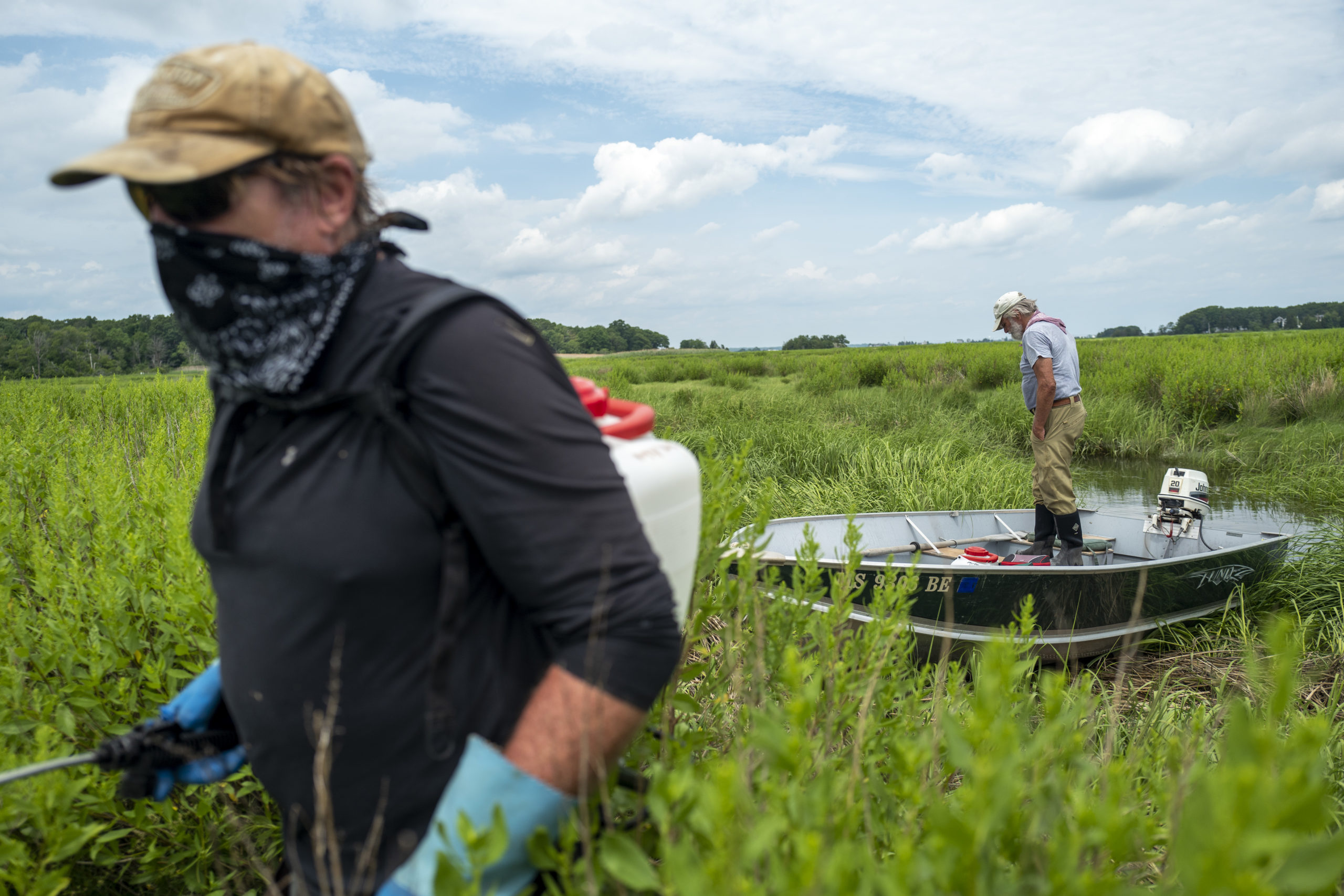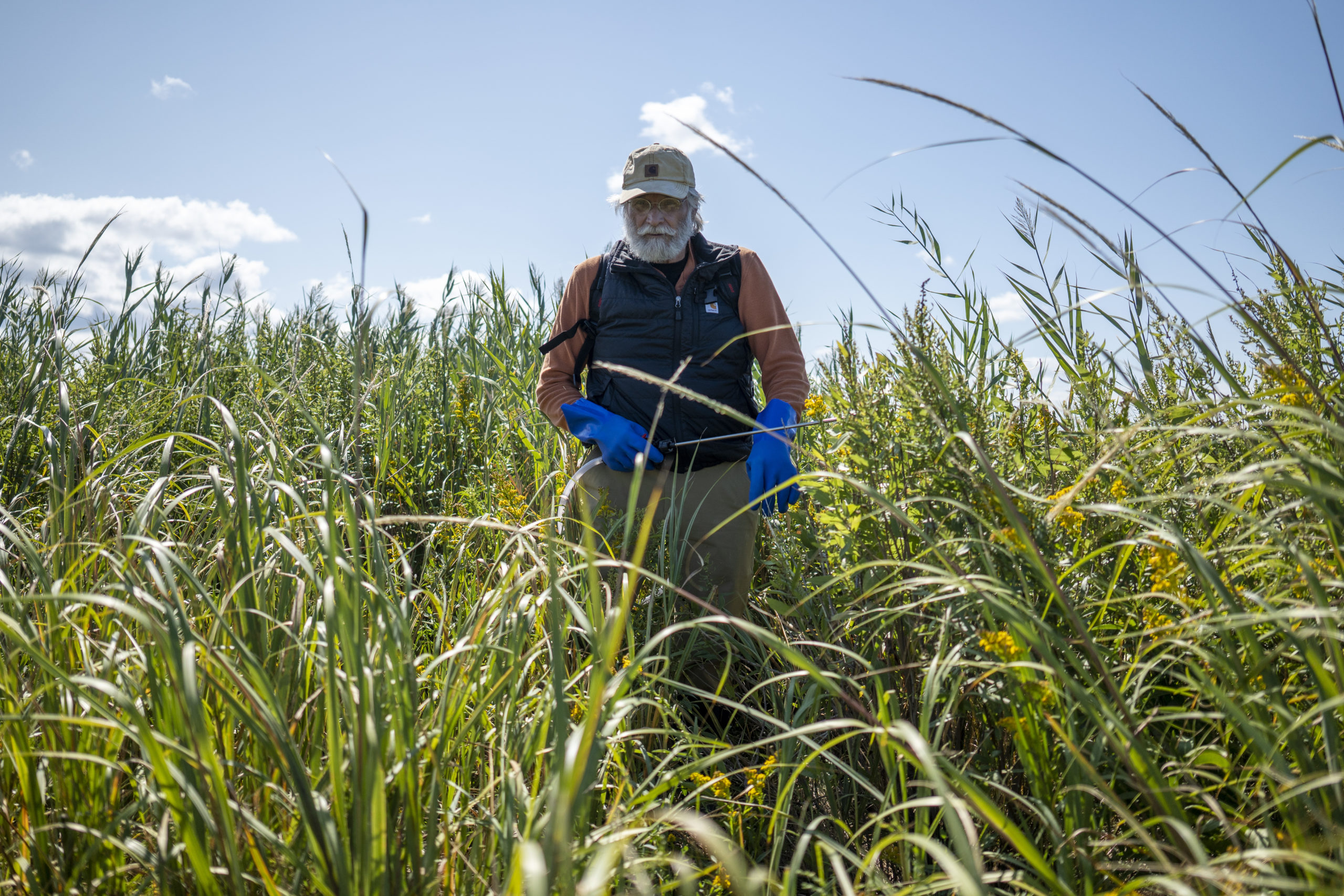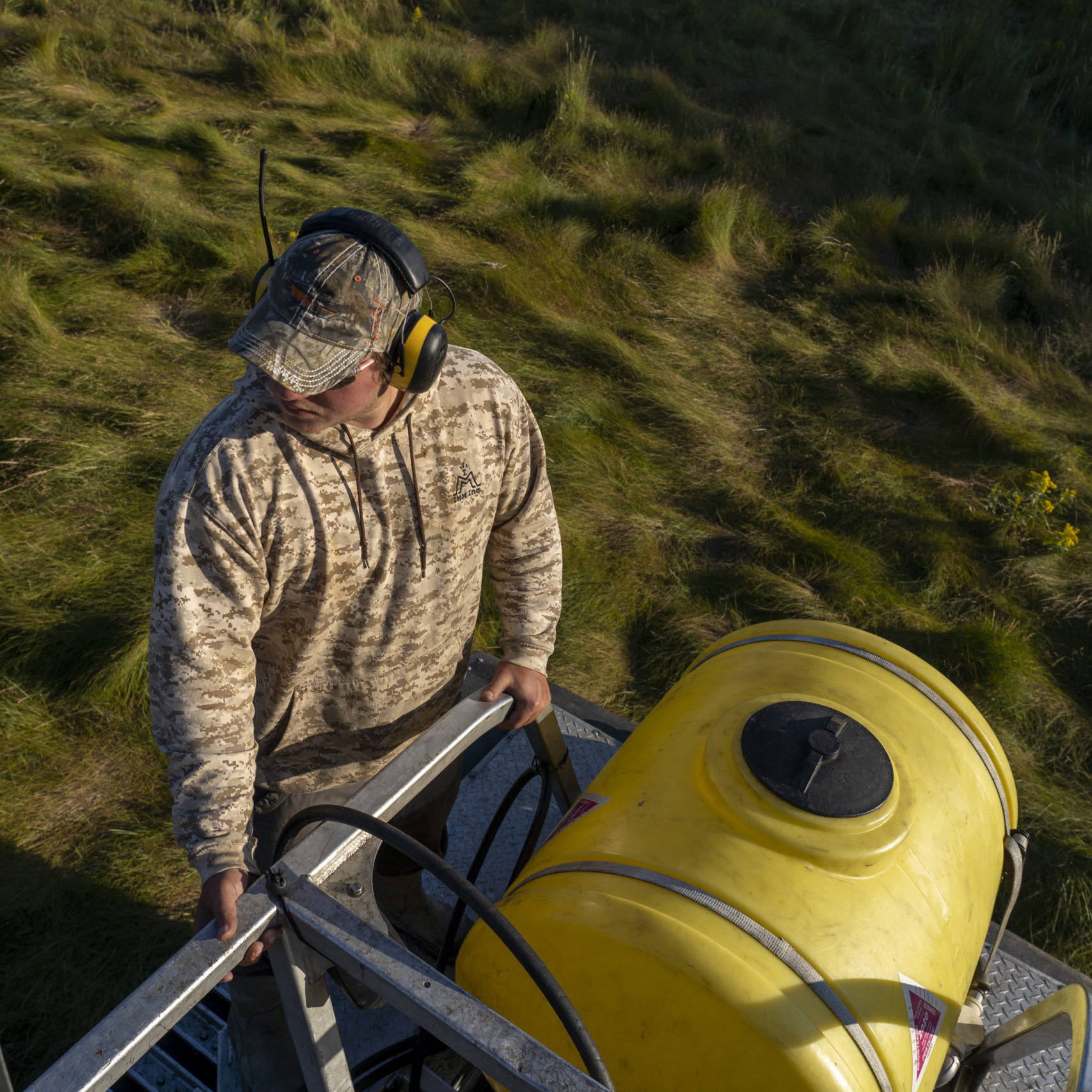Invasive Plant Management
Invasive plants crowd our native marsh vegetation by reducing sunlight, moisture, and critical nutrients. Both phragmites australis and perennial peppered are highly invasive plants that are destroying the Great Marsh. Our Process to combat the invasive species is a multi-step process. First, we map out large areas of phragmites australis and perennial pepperweed using GPS field observation mapping and aerial drone footage.
Invasive plants crowd our native marsh vegetation by reducing sunlight, moisture, and critical nutrients. Both phragmites australis and perennial peppered are highly invasive plants that are destroying the Great Marsh. Our Process to combat the invasive species is a multi-step process. First, we map out large areas of phragmites australis and perennial pepperweed using GPS field observation mapping and aerial drone footage.


Next, we set out into the marsh, often having to navigate it’s intricate waterways by boat.
Using a carefully mixed chemical composition, we are able to target and kill the invasive species without harming any of the native marsh ecosystem.


And while the marsh tends to be a generally safe place to be, sometimes we fall into an unexpected creek.

Sometimes, a stand of phragmites is just too large to kill on foot using the chemical solution carried on our backs so we use large, specially designed marsh tractors to target especially large areas.


To date, over 200 acres of invasive Phragmites stands have been mapped and treated on the marsh platform of the Great Marsh in Ipswich, Rowley, Newbury, Newburyport, and Salisbury. Treatment of another invasive, perennial pepperweed, is also underway on the 8,000 acres of marsh that are infested with, or under imminent threat from, the expansion of this invasive plant.
Maintenance level control activities are required to keep the Phragmites and pepperweed managed until scientific recommendations can be implemented that restore the natural tidal flow to these areas.
Protection and restoration of the Great Marsh is made possible with support from our local communities.
Sustaining the longevity and viability of our work in The Great Marsh would not be possible without the support of local, state, and national community partners. If you’d like to volunteer or become a sustaining member, you can support us using the link below.
